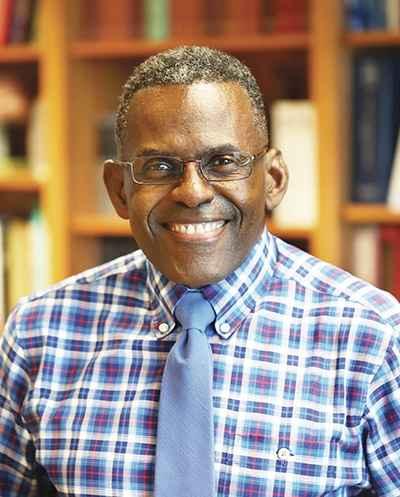
Spotlight on Dwayne Simmons, PhD
Professor and Chair of the Department of Biology at Baylor University
and 2021 AHRF Grant Recipient
Article by Matsya Thulasiram
“Science is a way of explaining the natural world that we see, and religion gives us that significance and meaning as to what that is all about. To me they are two sides of the same coin.”
To some, Dr. Dwayne Simmons’ two passions of science and religion can be seen as opposing forces, but for someone who naturally seeks to find connections, these topics are synergistic. Simmons’ holistic perspective is not only a significant part of who he is but also what drew him to Baylor University seven years ago.
At Baylor, Simmons continued his work on the auditory efferent system, the pathway that carries signals from the brain to the cochlea. The efferent system is not widely studied in the field of auditory neuroscience, but Simmons is no stranger to going against the grain, or “swimming upstream,” as he describes. Simmons’ preliminary work confirmed fundamental aspects of the development of the efferent pathway that challenged previously established literature. These discoveries led to the development of a new mouse model to investigate calcium-related responses in the inner ear, which Simmons pursued further in his AHRF funded study.
Mouse model for noise-induced and age-related hearing loss
Calcium signalling is a fundamental process for hearing function. Oncomodulin is a calcium-binding protein that is unique to a subset of cells, including outer hair cells and myeloid immune cells in the cochlea. To determine the role of the oncomodulin protein in hearing function, Simmons engineered an oncomodulin knockout mouse model. He observed that oncomodulin knockout mice become deaf around three months of age, representing a model for early onset age-related hearing loss, and that they are highly sensitive to noise.
Digging deeper into understanding the mechanism behind these responses, Simmons discovered that the absence of oncomodulin causes higher calcium signals in the outer hair cells of knockout mice than in normal mice. These results suggested that without oncomodulin, calcium levels are dysregulated in the cochlea, and this imbalance is what primes the hair cells for their sensitivity to different kinds of damage. Previous work done in calcium signalling shows that too high levels of calcium lead to cell death. So, how will the cochlea respond to different types of damage, including noise or aging, when calcium is dysregulated? This is merely one of questions that Simmons is actively pursuing to answer next.
What’s next: Finding connections between systems and cell types
Simmons’ future investigations will examine the dynamics of the efferent system during the aging process and delve into the interactions between the immune system and hair cells throughout development, maturation, and as a consequence of damage. In finding connections between systems and cell types Simmons is “hopeful to come up with effective targets to [mitigate] noise damage or aging damage” with the ideal goal being the production of preventative interventions against hearing loss.
This article was contributed by Matsya Thulasiram, PhD candidate at the University of Toronto.
